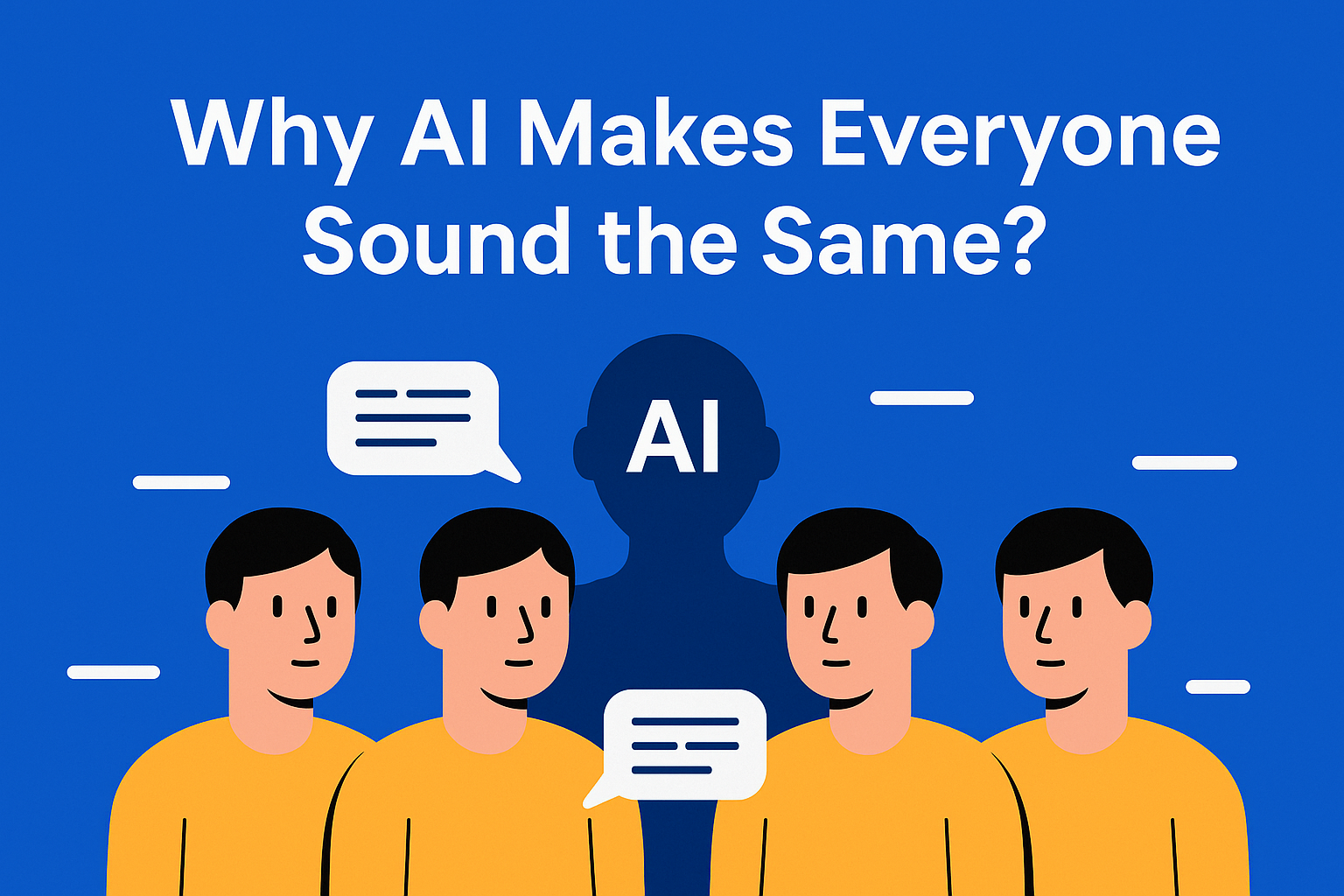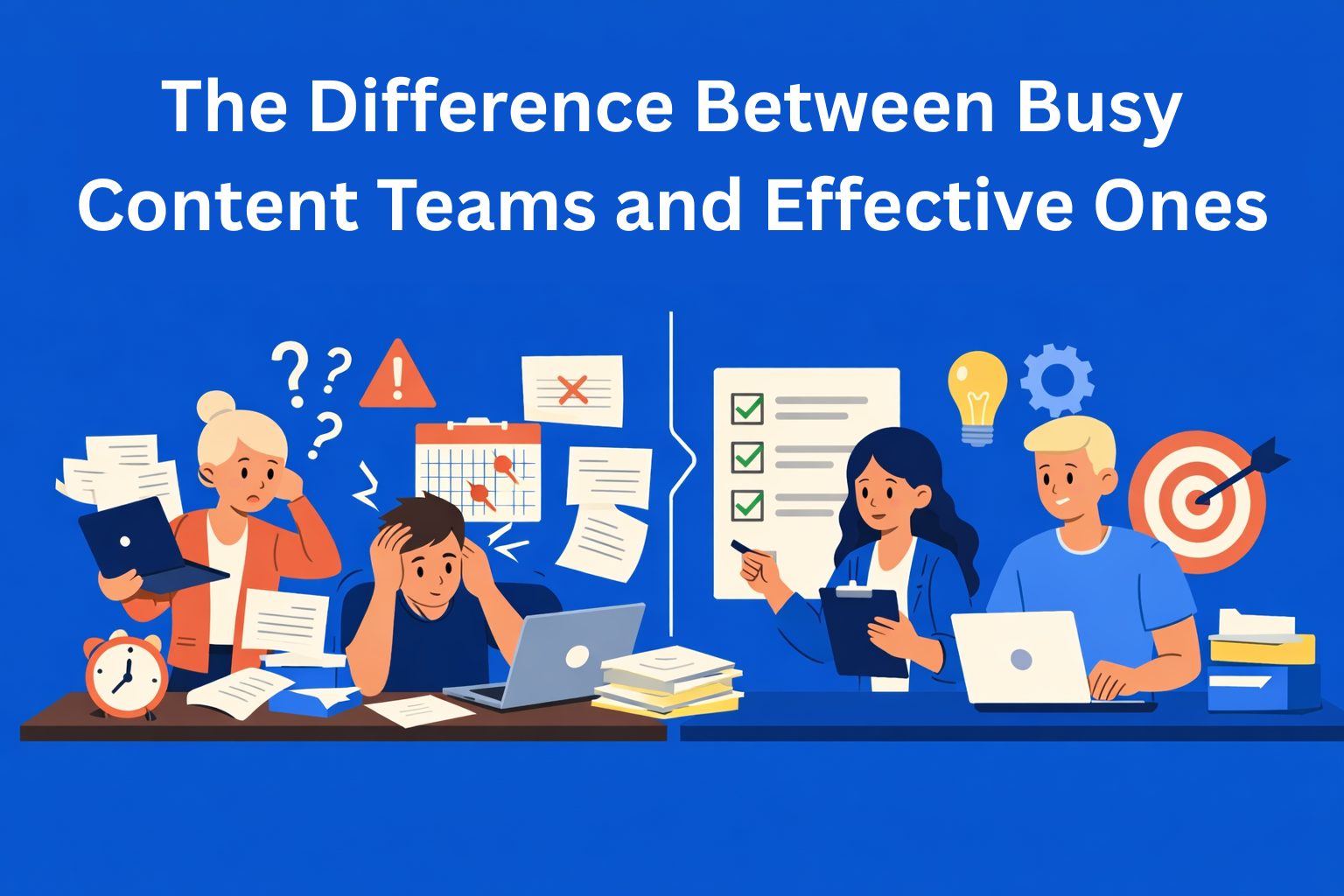Why AI Makes Everyone Sound the Same (And How to Actually Stand Out)
AI writing makes everyone sound the same. Learn why this happens and how to stand out by adding your voice, perspective, and personality so your content feels real and unique.

You’ve probably noticed that more and more articles online sound the same. Everyone writes in almost the same tone, like they’re all following one formula. The texts are neatly structured, but they lack that personal voice that helps you connect with the writer.
This happens because more and more people use AI for writing, and that’s why so much content looks and sounds alike. AI writing can be a great tool, but if you just rely on it and don’t add any of yourself into the text, you end up with something correct but boring.
Key Takeaways
- AI creates safe, predictable writing - because it learns from common language patterns, most AI-generated texts sound similar and lack personality.
- Authenticity is what breaks the pattern - your personal tone, humor, and real experiences give writing the depth that algorithms can’t imitate.
- Don’t settle for the first AI draft - treat it as a framework, then rewrite it with your perspective, rhythm, and emotion to make it feel alive.
- Imperfect writing feels human - small quirks, uneven pacing, and real emotion create trust and help readers connect with you.
- The winning formula is hybrid - use AI for structure and speed, but let your creativity shape the story; that’s how you stand out in a world of sameness.
How AI Produces the Same Sentences
AI models like ChatGPT or other text generators basically work by predicting the most likely next word. They analyze millions of examples from the internet and build text that feels natural and correct. But that’s exactly the problem.
Since AI is trained to use the most common words and phrases, it gives you text that sounds familiar, safe, and pretty neutral. In other words, there’s not much authenticity there. AI content often looks polished and neat, but it usually loses that personal touch that makes writing special.
Why We Accept the First Draft
Another reason everyone writes the same is because people are often lazy and accept the first text AI gives them. When we see it makes sense, we go, “Perfect, that’s done!” And that’s usually when we lose the chance to add our personal touch or our own perspective.
People love shortcuts, and AI offers exactly that, it’s quick and convenient. But speed comes at a cost. The text becomes generic. If AI writes a blog about “productivity” or “self-development,” you’ll get the same tone as every other article on those topics. It might save time, but it erases what makes you unique.
The Consequences: Losing Your Authentic Voice
When everyone writes the same way, no one stands out. The audience starts to feel like everything they read sounds the same. The text might seem professional, but it doesn’t create emotion, it doesn’t show personality, and it doesn’t feel “alive.”
AI-generated texts often use the same phrases, like “In today’s world,” “More than ever,” or “The key to success is…” Another giveaway is the em dash “— ” it’s a small sign that AI was involved since that symbol isn’t even on most keyboards. When people see these patterns often, their brains stop paying attention. That’s why the content loses impact and starts to blend in with thousands of other posts.
Over time, this kind of writing kills trust. Readers no longer feel like they’re talking to a person, they feel like they’re reading something written by a program. And today, audiences crave honesty and authenticity more than ever.
How to Use AI Smartly
The fact that AI produces similar-sounding texts doesn’t mean we should avoid it. On the contrary, if we use it the right way, AI tools can be amazing assistants. The key is to treat it as a starting point, not a finished product.
AI can help you:
- Organize your thoughts and ideas so your text flows logically. For example, you can type a few sentences about your topic and ask AI to suggest a clear order, introduction, main part, and conclusion.
- Find the main idea, topic, or title that makes sense. Try writing a few versions of a headline or ask the AI to suggest some, then let it rate them by clarity and interest.
- Create a simple outline, a basic structure with an intro, body, and conclusion. For example, AI can help you organize subheadings or main points. After that, you just add your own style, real-life examples, and tone to make the text sound natural and real.
But real writing starts after that. That’s where your voice comes in. AI can help you write faster, but you’re the one who gives the text its feeling, tone, and life.
How to Make Sure Your Text Doesn’t Sound Like AI
Here are a few simple strategies that can change everything:
a) Add Personal Perspective
Share your experience. Include personal stories, examples, even small mistakes. For example, instead of writing, “AI is changing how we work,” say, “AI helped me write my first article twice as fast, but I realized I had to rewrite it to make it sound like me.” The example might not be perfect, but the difference is clear.
b) Change the Tone and Rhythm
AI loves neat and balanced sentences where everything sounds perfect, but you don’t have to write like that. Mix short and long sentences, add pauses, humor, or opinions. That’s what makes writing feel alive and interesting.
Writing with AI should have rhythm and energy. If the text feels too flat, readers will lose interest quickly.
c) Break the Structure
You don’t always need to follow the perfect order of intro–body–conclusion. Sometimes start with a question, a personal story, or an unexpected insight. AI tends to be predictable, and predictability kills curiosity.
d) Ask Yourself the Key Question
“Would someone know I wrote this?” If not, you haven’t added enough of yourself. Include thoughts and ideas that only you would have.
When readers see themselves in your point of view, the text becomes a conversation, not just a pile of information.
Example: AI Version vs. Human Version
AI version:
“Writing with AI technology has become popular because it saves time and increases productivity. However, it’s important to keep a personal tone to make the text authentic.”
Human version:
“When I first used AI to write a blog, I was amazed at how fast it worked, literally in two minutes. But when I read what ChatGPT wrote, I wasn’t impressed at all. That’s when I realized I had to rewrite it if I wanted someone to actually enjoy reading it.”
See the difference? AI gives you the foundation, but your voice and style create a real connection with the reader.
Why Your Personal Voice Matters
A human voice has tone, emotion, and rhythm. When you write about something you’ve really experienced, the reader can feel it. Authenticity is something no algorithm can copy.
AI content in marketing can be useful, but honesty is what builds trust over time. People remember texts that make them feel something and show the writer’s personality, not dry information no one cares about.
Combine AI and Human Creativity
By now, you’ve probably realized that the best results come when you combine AI and creativity.
You’ve probably heard this a thousand times, but it’s worth repeating, people need to understand how to get the best out of AI. Use it to speed up your process, then add your own thoughts, doubts, humor, and even mistakes. Those are the things that make a difference. There’s no such thing as a perfect text, but an authentic one always wins.
If AI writes something that feels “too perfect,” that’s a sign you need to mess it up a bit, in the best way possible. Add a touch of chaos, humanity, and personality.
Conclusion
Artificial intelligence is just a tool, nothing more. It can help you write faster, come up with ideas, and organize your thoughts. But you’re the one who gives the text meaning, tone, and emotion.






